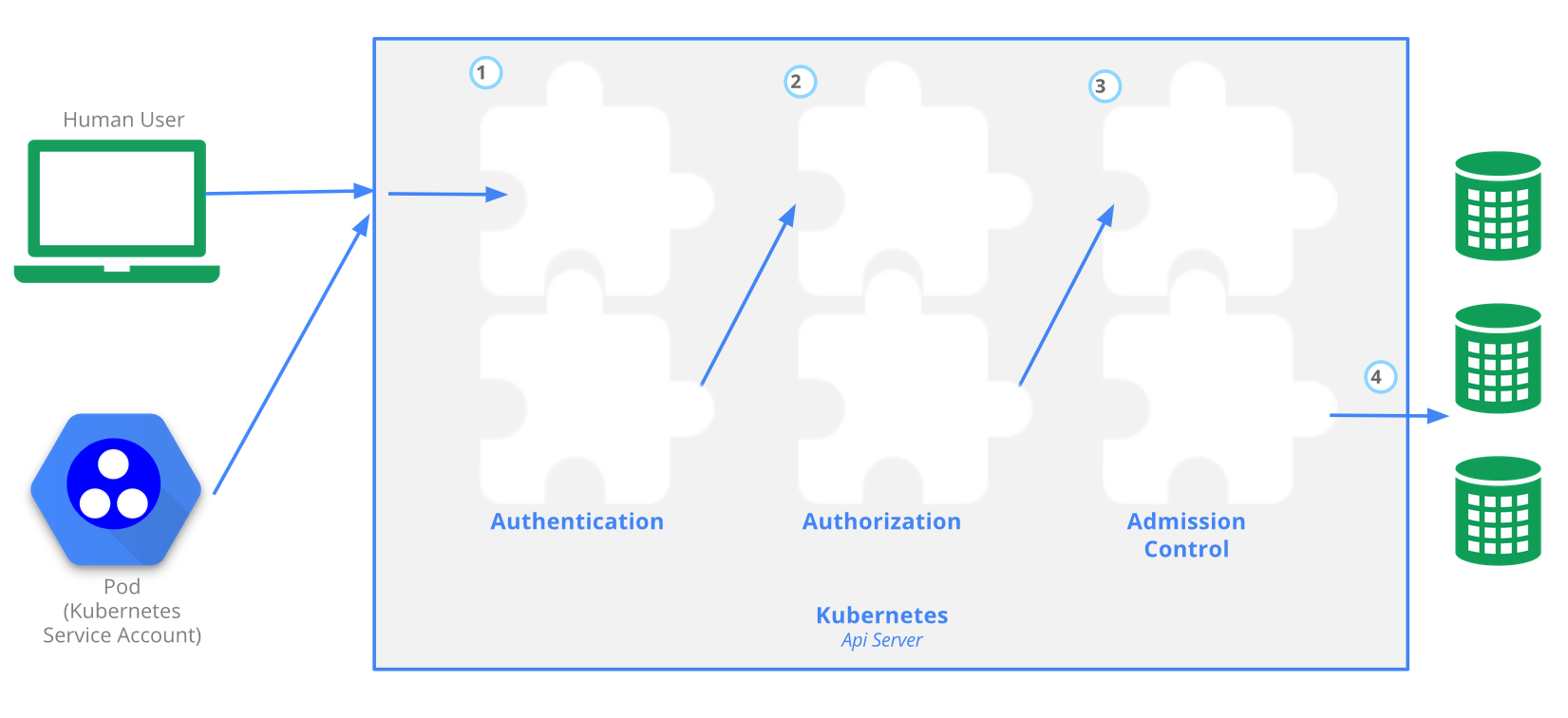Kubernetes/Security and RBAC
Jump to navigation
Jump to search
API Server and Role Base Access Control
The Kubernetes API server provides CRUD actions (Create, Read, Update, Delete) interface for interacting with cluster state over a RESTful API. API calls can come only from 2 sources:
- kubectl
- POD
There is 4 stage process
- Authentication
- Authorization
- Admission
- Writing configuration CRUD actions to etcd database
RBAC is managed by 4 resources, divided over 2 groups
| Group-1 namespace resources | Group-2 cluster level resources | resources type |
|---|---|---|
| roles | cluster roles | defines what can be done |
| role bindings | cluster role bindings | defines who can do it |
When deploying a pod a serviceaccount is created. The serviceaccount represents an identity of an app running in the pod. Token file holds authentication token.
kubectl create ns rbac kubectl run apitest --image=nginx -n rbac #create test container, to run API call test from
Each pod has serviceaccount, the API authentication token is on a pod. When a pod makes API call uses the token, this allows to assumes the serviceaccount, so it gets identity. You can preview the token on the pod.
kubectl -n rbac1 exec -it apitest-<UID> -- /bin/sh #connect to the container shell
# cat /var/run/secrets/kubernetes.io/serviceaccount/{token,namespace} #token and namespace that allows to connect to API server
Serviceaccounts can only be used within the same namespace.
kubectl get serviceaccounts --all-namespaces
